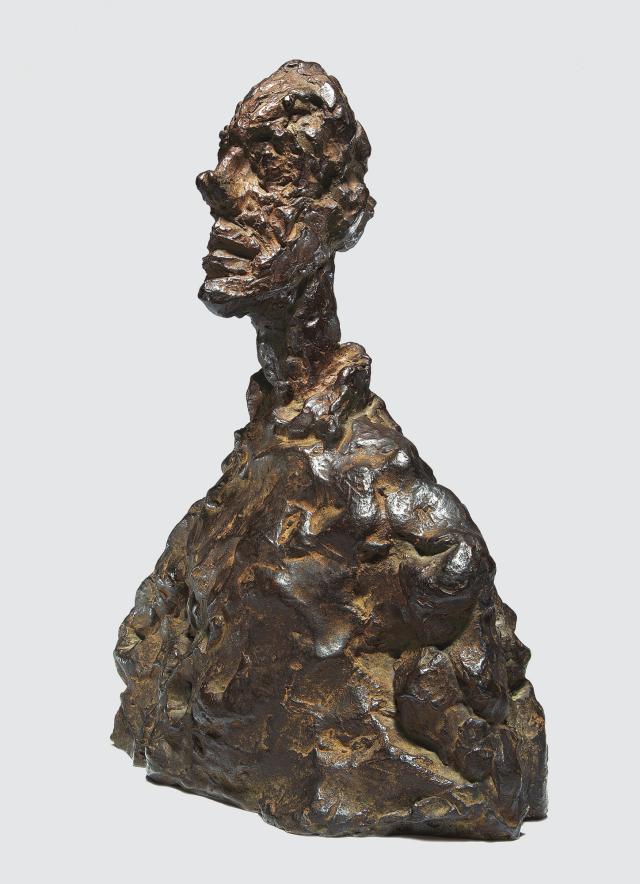“The day I’ll know how to do Diego’s head, I will know how to do any head.” With this sculpted portrait, Alberto Giacometti offers us a powerful and sensitive evocation of his brother Diego (1902-1985), who was a year younger than him. The two brothers, who were very close, shared the same sculpture studio in Paris, where Diego made plaster casts, patinated bronzes and, from 1935, regularly posed for his older sibling. A model constantly looked at, scrutinised, kneaded and painted, Diego became the medium and the bedrock of the modelling studies Alberto carried out in the 1950s.
A considerable time after his formal experimentations falling within the scope of the Parisian avant-garde and following on from his landscapes filled with long and slender beings, whose singular aesthetic earned him worldwide fame, Giacometti returned to his constant obsession of sculpting a head that would be as close as possible to perceived reality, favouring the immediate encounter with the living being. The progressive and constantly renewed observation of Diego’s face fitted within this new approach and would give birth to a series of sketches, as well as a series of busts and heads, executed between 1951 and 1957.
Massive and summarily modelled, the bust plays the role of a base from which the face emerges, as though placed on a pedestal. It keeps the spectator at bay, like a sacred figure, the divinity of a primitive cult, which dominates us by its hieratic attitude. This distance, which is that of the artist in front of his model and which is necessary to enable a true appreciation, gives life to the figure which regains control of the battered and rough material from which it originates. The artist tirelessly palpated and kneaded the clay with his fingers, striving to capture the essence of his model, whose gaze was the only thing capable of conveying the depth of his soul and of providing the sensation of an immediate presence. Rendering the expressivity of the gaze, which is to say of life, in painting and in sculpture was the vocation that the artist would pursue until his death in an oeuvre in constant gestation.
A considerable time after his formal experimentations falling within the scope of the Parisian avant-garde and following on from his landscapes filled with long and slender beings, whose singular aesthetic earned him worldwide fame, Giacometti returned to his constant obsession of sculpting a head that would be as close as possible to perceived reality, favouring the immediate encounter with the living being. The progressive and constantly renewed observation of Diego’s face fitted within this new approach and would give birth to a series of sketches, as well as a series of busts and heads, executed between 1951 and 1957.
Massive and summarily modelled, the bust plays the role of a base from which the face emerges, as though placed on a pedestal. It keeps the spectator at bay, like a sacred figure, the divinity of a primitive cult, which dominates us by its hieratic attitude. This distance, which is that of the artist in front of his model and which is necessary to enable a true appreciation, gives life to the figure which regains control of the battered and rough material from which it originates. The artist tirelessly palpated and kneaded the clay with his fingers, striving to capture the essence of his model, whose gaze was the only thing capable of conveying the depth of his soul and of providing the sensation of an immediate presence. Rendering the expressivity of the gaze, which is to say of life, in painting and in sculpture was the vocation that the artist would pursue until his death in an oeuvre in constant gestation.
